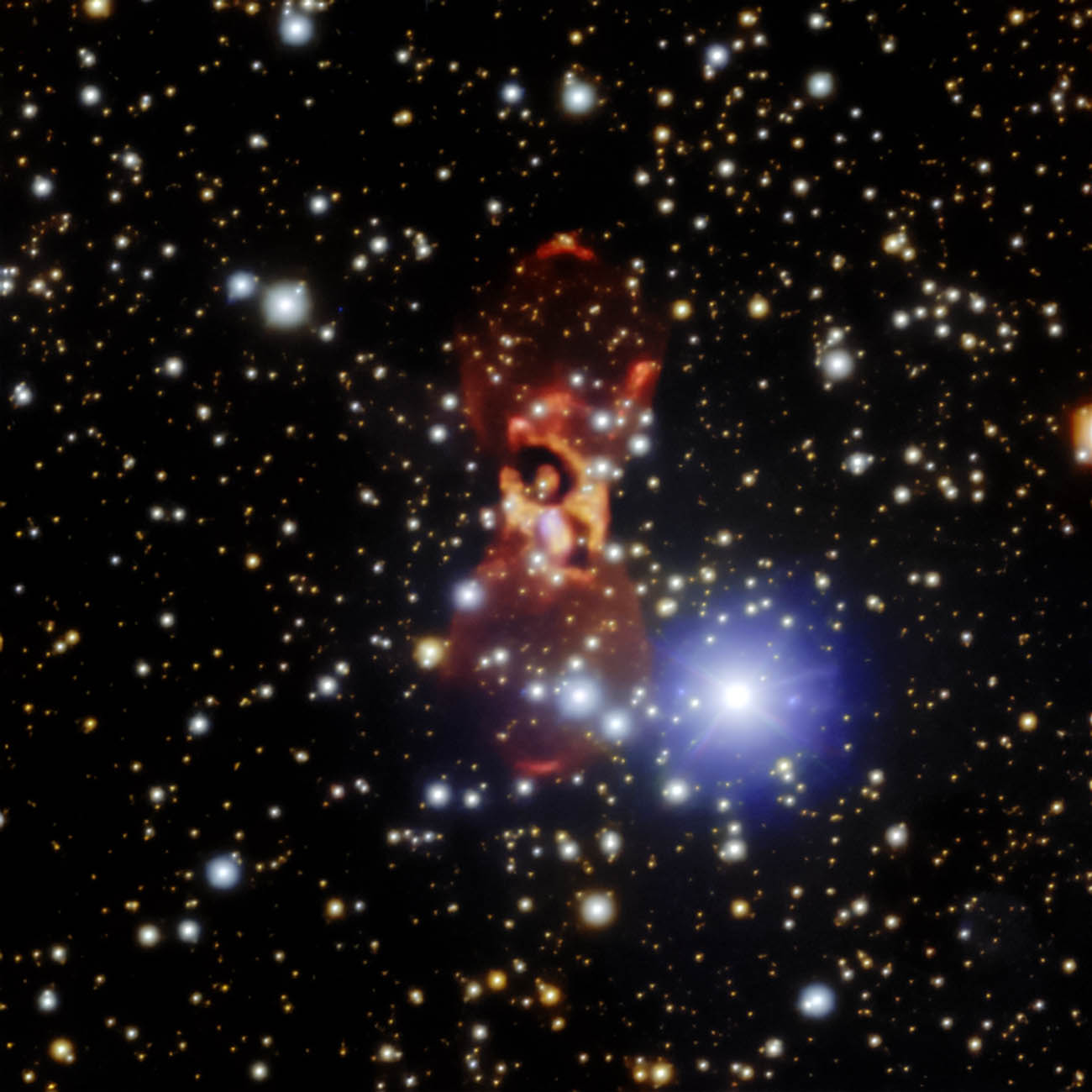NOIRLab: CK Vulpeculae seen with Gemini North

The enigmatic CK Vulpeculae nebula. The team of astronomers measured the speeds and changes in positions of the two small reddish arcs about 1/4 of the way up from the bottom and 1/4 of the way down from the top to help determine that the nebula is expanding five times faster than previously thought. Credit: International Gemini Observatory/NOIRLab/NSF/AURA
Image processing: Travis Rector (University of Alaska Anchorage), Jen Miller (Gemini Observatory/NSF’s NOIRLab), Mahdi Zamani & Davide de Martin
An international team of astronomers using Gemini North’s GNIRS instrument have discovered that CK Vulpeculae, first seen as a bright new star in 1670, is approximately five times farther away than previously thought. This makes the 1670 explosion of CK Vulpeculae much more energetic than previously estimated and puts it into a mysterious class of objects that are too bright to be members of the well-understood type of explosions known as novae, but too faint to be supernovae.
350 years ago, the French monk Anthelme Voituret saw a bright new star flare into life in the constellation of Vulpecula. Over the following months, the star became almost as bright as Polaris (the North Star) and was monitored by some of the leading astronomers of the day before it faded from view after a year [1]. The new star eventually gained the name CK Vulpeculae and was long considered to be the first documented example of a nova — a fleeting astronomical event arising from an explosion in a close binary star system in which one member is a white dwarf, the remnant of a Sun-like star. However, a string of recent results have thrown the longstanding classification of CK Vulpeculae as a nova into doubt.
In 2015, a team of astronomers suggested that CK Vulpeculae’s appearance in 1670 was the result of two normal stars undergoing a cataclysmic collision. Just over three years later, the same astronomers further proposed that one of the stars was in fact a bloated red giant star, following their discovery of a radioactive isotope of aluminum in the immediate surroundings of the site of the 1670 explosion. Complicating the picture even further, a separate group of astronomers proposed a different interpretation. In their paper, also published in 2018, they suggested that the sudden brightening in 1670 was the result of the merger between a brown dwarf — a failed star too small to shine via thermonuclear fusion that powers the Sun — and a white dwarf.
Now, adding to the ongoing mystery surrounding CK Vulpeculae, new observations from the international Gemini Observatory, a Program of NSF’s NOIRLab, reveal that this enigmatic astronomical object is much farther away and has ejected gas at much higher speeds than previously reported.
This team, led by Dipankar Banerjee of Physical Research Laboratory Ahmedabad, India, Tom Geballe of Gemini Observatory, and Nye Evans of Keele University in the United Kingdom, initially planned to use the Gemini Near-Infrared Spectrograph (GNIRS) instrument on Gemini North on Hawai‘i’s Maunakea to confirm the 2018 detection of radioactive aluminum at the heart of CK Vulpeculae [2]. After realizing that detecting this in the infrared would be far more difficult than they originally thought, the astronomers improvised and obtained infrared observations across the full extent of CK Vulpeculae, including the two wisps of nebulosity at its outermost edges.
“The key to our discovery was the GNIRS measurements obtained at the outer edges of the nebula,” elaborated Geballe. “The signature of redshifted and blueshifted iron atoms detected there shows that the nebula is expanding much more rapidly than previous observations had suggested.”
